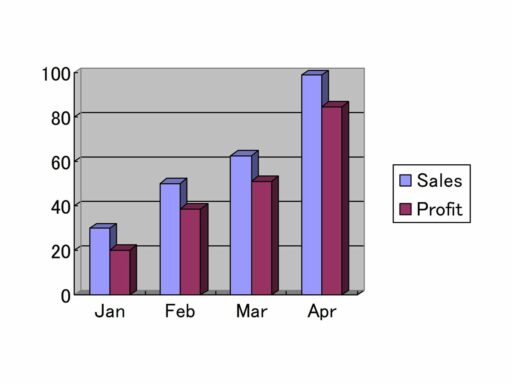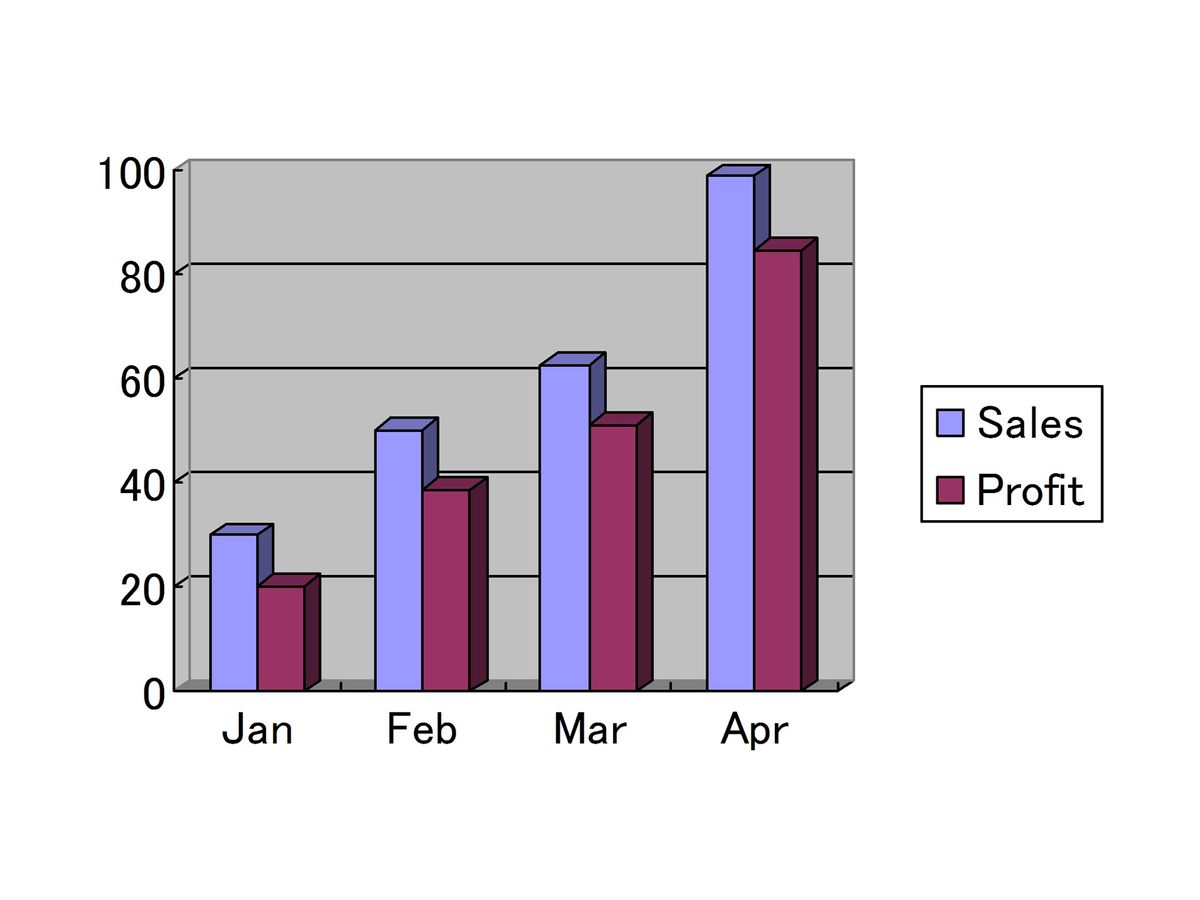The article ‘Uncovering Fluctuations: The Trends Impacting Naked Stock Prices’ delves into the myriad of factors that cause stock prices to swing, offering a comprehensive analysis of market volatility, earnings reports, broad market trends, options trading, and legal considerations. By examining these elements, the article aims to equip readers with a deeper understanding of the complex dynamics that influence stock valuations.
Key Takeaways
- Stock prices are influenced by a complex interplay of factors including market volatility, earnings reports, and broader economic and industry trends.
- Market volatility can be attributed to a variety of causes such as economic indicators, political events, and company-specific news, leading to unpredictable price fluctuations.
- Earnings reports and analysts’ expectations play a critical role in stock valuation, with significant price movements often occurring in response to meeting or missing these projections.
- Options trading offers a way to manage risk through truncated risk strategies, while also providing opportunities to leverage market trends.
- Legal and regulatory frameworks, such as securities class action litigation and regulatory changes, have a direct impact on market stability and stock prices.
Understanding Market Volatility and Stock Price Fluctuations


Defining Market Volatility
Market volatility is the heartbeat of the stock market, reflecting the rapid and often unpredictable changes in stock prices. Volatility measures the frequency and magnitude of these price fluctuations over a specific period, providing investors with a gauge of the market’s stability or instability.
Historically, volatility has been quantified using statistical measures such as historic volatility, which captures past price movements, and implied volatility (IV), which forecasts future fluctuations. The VIX, or the CBOE Market Volatility Index, is a popular barometer for market sentiment, projecting the expected volatility over the next 30 days based on S&P 500 index options.
Volatility is not just a statistic; it’s a critical factor that shapes investment strategies and risk assessments. A volatility crunch, where IV plummets, can signal a shift in market dynamics, while a volatility skew indicates varying expectations of risk across different strike prices.
Understanding the nuances of market volatility is essential for navigating the stock market’s ebb and flow. Here’s a snapshot of key volatility indicators:
| Indicator | Description |
|---|---|
| Historic Volatility | Measures actual price variations over a period |
| Implied Volatility | Predicts future price movements based on options |
| VIX | Reflects expected market volatility in the near term |
Historical Perspectives on Stock Volatility
Historical volatility has been a critical measure for investors seeking to understand the risks associated with different securities. It quantifies the actual price fluctuations of a financial instrument over a specific period, such as a day, month, or year. A higher historic volatility indicates greater price turbulence and potentially higher risk for investors.
In reviewing the historical data, one can observe patterns and trends that have influenced market behavior. For instance, the Volatility Index (VIX) often referred to as the ‘fear gauge,’ provides insights into investor sentiment and market stress levels. A volatile market is characterized by continuous and unpredictable price changes, leading to instability and uncertainty.
The concept of volatility is not only confined to historical data but also extends to expectations about future price movements. Expected volatility, for example, is a forward-looking measure that can influence option pricing and investor strategies.
A look at the historical metrics can reveal significant events that have led to a ‘volatility crunch,’ where implied volatility experiences a rapid decline, affecting option prices and market sentiment. Understanding these historical fluctuations is essential for investors to navigate the risks and opportunities in the stock market.
The Impact of Economic and Political Events on Volatility
Economic and political events play a pivotal role in shaping market volatility. Significant events such as elections, policy changes, and geopolitical conflicts can lead to heightened uncertainty and erratic market behavior. For instance, during election years, the stock market often experiences increased volatility as investors react to the potential implications of policy shifts and leadership changes.
Market participants typically brace for volatility during major economic announcements, such as interest rate decisions, employment reports, and GDP figures. These events can cause sharp price movements as investors adjust their expectations based on new information.
The anticipation of volatility during political events underscores the need for investors to maintain a focus on long-term strategies, rather than attempting to time the market.
The following table illustrates the impact of select economic and political events on market volatility:
| Event Type | Typical Market Reaction |
|---|---|
| Elections | Increased volatility due to policy uncertainty |
| Policy Changes | Sudden shifts in market sentiment |
| Geopolitical Conflicts | Spikes in volatility and risk aversion |
Analyzing the Role of Earnings Reports and Analyst Expectations


Quarterly and Annual Earnings Influence
The pulse of the market often beats to the rhythm of corporate earnings, which serve as a barometer for a company’s financial health. Investors closely scrutinize these figures, as they reflect the company’s ability to generate profit and, by extension, the potential for stock price appreciation.
Economic conditions can significantly sway both annual and quarterly results. Factors such as market demand, regulatory changes, and operational costs are just a few elements that can cause earnings to vary from one period to the next. This variability can lead to stock price fluctuations as investors adjust their expectations based on reported outcomes.
The improvement in corporate earnings through 2023’s fourth quarter has been a beacon of encouragement, signaling a potential uptrend in investor confidence and market stability.
Here is a snapshot of how earnings can influence stock prices:
- Quarterly earnings provide a near-term view of a company’s financial performance and can trigger immediate stock price movements.
- Annual earnings offer a broader perspective, reflecting the company’s performance over a longer period and can influence long-term investment decisions.
- Discrepancies between actual earnings and analyst estimates can lead to sharp price adjustments as the market reacts to new information.
Securities Analysts and Stock Coverage
The influence of securities analysts on stock prices cannot be overstated. Positive recommendations from analysts can lead to increased demand for the stocks they cover, potentially driving up their market value. Conversely, a lack of coverage or negative reports can result in a decline in stock price and trading volume.
The following table illustrates the potential impact of analyst coverage on a company’s stock:
| Analyst Action | Potential Stock Price Reaction |
|---|---|
| Coverage Initiated | Possible Price Increase |
| Coverage Ceased | Likely Price Decrease |
| Positive Report | Increase in Demand and Price |
| Negative Report | Decrease in Demand and Price |
Analysts’ interpretations of financial information play a critical role in shaping market perceptions and, consequently, stock prices. Their reports can sway investor sentiment and influence market trends, making their coverage a pivotal factor for companies.
It is essential for investors to monitor the analysts’ coverage and reports as they can significantly affect the market price and trading volume of stocks. The absence of regular reports or the presence of unfavorable research can lead to a decrease in demand for the stock, underscoring the importance of analyst relations in maintaining stock value.
Meeting or Missing Earnings Estimates
The anticipation and revelation of a company’s earnings report can be a pivotal moment for its stock price. Meeting or exceeding earnings estimates typically fuels positive market sentiment, often resulting in an uptick in stock value. Conversely, an EPS miss can trigger a sharp decline, as it may signal underlying issues or a misalignment with market expectations.
- Positive outcomes of meeting estimates:
- Boost in investor confidence
- Potential stock price increase
- Favorable media coverage
- Negative outcomes of missing estimates:
- Decrease in stock price
- Loss of investor confidence
- Negative media attention
The intricate dance between expected and actual earnings is a delicate one, where the rhythm of the market’s reaction can sway heavily in either direction based on the tune of a company’s financial performance.
It’s crucial for investors to understand that earnings estimates are not set in stone. They are based on a multitude of factors, including past performance, industry trends, and analyst predictions. A miss may not only reflect current performance but also set a precedent for future expectations. The table below succinctly captures the immediate market response to earnings announcements:
| Earnings Outcome | Immediate Stock Reaction |
|---|---|
| Meet Estimates | Generally Positive |
| Miss Estimates | Generally Negative |
The repercussions of an earnings miss are multifaceted, affecting not just the stock price but also the overall perception of the company’s financial health.
Exploring the Effects of Broad Market and Industry Trends


General Economic and Market Conditions
The stock market is a reflection of the economy’s health, with various factors influencing its performance. Economic conditions such as inflation, interest rates, and GDP growth play a pivotal role in shaping investor sentiment and stock prices. For instance, rising interest rates often lead to higher borrowing costs for companies, which can dampen earnings and, in turn, affect stock valuations.
- Inflationary pressures can erode purchasing power and impact consumer spending, a key driver of economic growth.
- Bank failures and macroeconomic challenges can lead to reduced investor confidence and market volatility.
- Labor market conditions and the availability of resources can influence business operations and profitability.
Economic uncertainties and the overall performance of equity markets are intertwined, with each influencing the other in a complex dance of cause and effect.
It’s crucial for investors to monitor these economic indicators as they can provide valuable insights into potential market movements. While past performance is not indicative of future results, historical trends can offer a framework for understanding how economic shifts may impact stock prices.
Industry-Specific Fluctuations
The imbalance between supply and demand is a pivotal factor that can lead to significant shifts in stock prices within specific industries. This dynamic is particularly evident in sectors where product scarcity or overproduction can swiftly alter market perceptions and investment behaviors.
- Industry Background
- Our Industry
- Seasonality
For instance, in the energy sector, market prices for oil, gas, and other energy sources directly influence the demand for related services. This, in turn, affects the levels of activity and profitability, especially in areas such as energy generation and pipeline construction projects. The availability of transportation and transmission capacity further complicates the demand equation, highlighting the intricate interplay of factors that drive industry-specific trends.
The highly competitive nature of industries often exacerbates the volatility, where even minor changes in project mix or service levels can have amplified effects on profitability and stock valuations.
The Influence of Technology Stocks on Market Trends
The landscape of the stock market is often shaped by the performance of technology stocks, which have become bellwethers for broader market sentiment. Investors continue to favor technology stocks, a trend that emerged last year and persists in the early months of 2024. This preference is reflected in the S&P 500’s movements, where tech companies hold significant weight.
The volatility of technology stocks is not a new phenomenon. Historically, these stocks have experienced higher levels of volatility compared to the broader market, which can lead to substantial price swings.
Technology stocks also serve as a barometer for investor confidence in market innovation and future growth prospects. Their performance can influence the investment strategies of both retail and institutional investors, often dictating the flow of capital into other sectors.
While the allure of high returns draws many to invest in tech stocks, it’s crucial to recognize the amplified risk that comes with this territory. Diversification through instruments like ETFs can offer a more balanced approach, providing exposure to the tech sector while mitigating some of the associated risks.
Assessing the Risks and Rewards of Trading Options


Understanding Truncated Risk in Options
Options trading introduces a concept known as truncated risk, which is particularly appealing to investors looking to limit their potential losses. This characteristic ensures that the downside loss is confined to a predetermined amount, typically the premium paid for the option. This means that no matter how significantly the underlying asset’s price moves against the position, the maximum loss remains capped.
In the context of options, liquidity is also a crucial factor. A liquid market allows for the easy entry and exit of positions, which is essential for managing risk effectively. However, options traders must be aware of pin risk, which occurs when the price of the underlying asset is close to the option’s strike price at expiration. This can lead to uncertainty regarding assignment and can unexpectedly alter risk exposure.
Risk reversal strategies involve buying a put option and selling a call option on the same underlying asset. This approach provides downside protection while potentially generating income from the sold call. It’s a balance of risk and reward, tailored to the investor’s risk tolerance and market outlook.
It’s important for investors to understand that options trading requires meeting certain criteria and is not suitable for everyone. The complexities of options transactions can lead to rapid and substantial losses, underscoring the need for a thorough understanding of both the risks and the investment objectives involved.
Strategies for Capitalizing on Market Trends
Investors often seek to leverage market trends to enhance their portfolio’s performance. Market timing is a strategy that involves making investment decisions based on predictive methods, with the goal of buying low and selling high. This can involve a variety of analytical approaches, including technical analysis, fundamental analysis, and economic forecasts.
- Technical Analysis: Utilizes historical price data and chart patterns to predict future movements.
- Fundamental Analysis: Examines company financials and industry conditions to assess stock value.
- Economic Forecasts: Considers macroeconomic indicators to gauge market direction.
Another approach is the use of market-not-held orders, which allow investors to give brokers flexibility in executing trades at the best possible price, without being bound to a specific time or price point.
Investors can also explore options trading, such as purchasing quarterly call options on a technology index, to capitalize on anticipated growth. This method can offer significant upside potential while also providing a defined risk profile.
Seasonal Trends and Quarterly Options
The concept of seasonality plays a crucial role in the pricing and trading of quarterly options. These options, expiring on the last business day of a calendar quarter, offer a unique opportunity for investors to align their strategies with cyclical market patterns. Seasonal trends can be particularly pronounced in certain sectors, such as retail, where holiday shopping significantly impacts quarterly performance.
Investors often leverage these seasonal fluctuations by purchasing options that correspond with expected market movements. For instance, acquiring quarterly call options on a technology index may be a strategic move if one anticipates a surge in tech growth during a specific quarter.
Seasonality in options trading is not just about recognizing patterns but also about strategic positioning to capitalize on predictable market movements.
Understanding and anticipating these trends can lead to more informed decision-making and the potential to profit from the market’s rhythmic ebb and flow.
Navigating Legal and Regulatory Implications of Market Fluctuations


Securities Class Action Litigation Trends
The landscape of securities class action litigation is ever-evolving, with 2023 marking a distinct shift from the previous year. Liquidity challenges have been a catalyst for bank mergers and acquisitions, which in turn have sparked a series of legal battles. Notably, these corporate movements have led to eight class action lawsuits, representing a significant portion of the year’s litigation activity.
Securities class action lawsuits can have profound implications for companies, often resulting in substantial costs and the diversion of management’s focus. The anticipation of such litigation can also affect the behavior of companies and their stock prices. To mitigate the risks of multi-jurisdictional litigation and the potential for inconsistent rulings, companies are increasingly incorporating specific provisions into their charters.
The convergence of federal and state court jurisdictions under Section 22 of the Securities Act presents a complex legal landscape for companies facing securities litigation.
The table below outlines the key statistics of securities class action litigation trends in 2023:
| Year | Number of Lawsuits | Percentage of Total Litigation |
|---|---|---|
| 2023 | 8 | 4% |
Regulatory Changes Affecting Stock Prices
Regulatory changes can have a profound impact on stock prices, often altering the investment landscape overnight. New regulations can increase compliance costs for companies, which may affect their profitability and, in turn, their stock prices. For instance, changes in securities laws, reporting requirements, and corporate governance standards can lead to increased legal and financial compliance costs, making some activities more time-consuming and costly.
- Changes in senior management or key personnel
- Fluctuations in trading volume
- Anticipated shifts in market size and growth
- Variations in demand for industry-specific offerings
- Market rumors and speculation
Regulatory shifts can also influence investor perception, potentially making a stock less attractive and leading to increased volatility. As companies adapt to new rules, the uncertainty can cause fluctuations in the market price of stocks, particularly for those in industries like technology, which have historically experienced high levels of volatility.
The Role of Governance in Mitigating Market Risks
Effective corporate governance is essential for managing the myriad of risks that companies face in the dynamic market environment. Corporate governance provides a structured approach to overseeing and mitigating risks, ensuring that companies adhere to legal and ethical standards. This includes the development and enforcement of a Code of Conduct, which mandates compliance with laws, regulations, and ethical principles.
The board of directors plays a pivotal role in risk oversight, focusing on areas such as financial controls, legal and compliance risks, and cybersecurity. Their responsibilities extend to overseeing risk management policies and ensuring the company’s adherence to regulatory requirements. The table below outlines the primary areas of risk oversight by different board committees:
| Committee | Primary Areas of Risk Oversight |
|---|---|
| Full Board | Strategic, liquidity, and organizational risks |
| Audit Committee | Financial, legal, compliance, and cybersecurity risks |
| Compensation Committee | Compensation policies and practices |
It is crucial for companies to not only establish robust governance structures but also to continuously evaluate and adapt these frameworks to address emerging risks effectively.
Failure to adequately manage risks can have detrimental effects on a business. Governance structures must be agile to respond to the evolving landscape of market risks, ensuring the long-term sustainability of the organization.
Conclusion
In summary, the trends impacting naked stock prices are multifaceted, reflecting the inherent complexities of the financial markets. Factors such as the difficulty in projecting future financial results, broad market and industry fluctuations, and the volatile nature of technology stocks contribute to significant price movements. The market price of common stock is subject to a variety of influences, including quarterly earnings, analyst coverage, and general economic conditions. Moreover, the potential for securities class action litigation following periods of market volatility adds a layer of risk for investors. It is crucial for stakeholders to recognize that stock market performance can often be disconnected from a company’s actual operating performance. As such, investors should approach market participation with a well-informed strategy, acknowledging the unpredictable and sometimes tumultuous nature of stock prices. The insights provided in this article aim to equip readers with a clearer understanding of the trends and risks at play, enabling more informed investment decisions in the face of market uncertainty.
Frequently Asked Questions
What is market volatility and how does it affect stock prices?
Market volatility refers to the degree of fluctuation in the price of a security, typically a stock. It measures how much and how quickly the price changes over a given period. High volatility is characterized by rapid and unpredictable price swings, which can significantly impact stock prices and investor sentiment.
How do earnings reports influence stock prices?
Earnings reports provide insight into a company’s financial performance over a specific period. Stock prices can fluctuate significantly based on the results of these reports, especially if the company’s performance differs from analyst expectations or industry benchmarks.
What are the effects of broad market and industry trends on individual stock prices?
Broad market and industry trends can have a profound impact on individual stock prices. General economic conditions, political events, and industry-specific developments can all influence investor sentiment and lead to price fluctuations.
What is truncated risk in options trading?
Truncated risk in options trading refers to a situation where the potential downside loss is limited to a predetermined amount. This characteristic is especially relevant to options, as it allows investors to define their maximum risk exposure regardless of market movements.
How can legal and regulatory changes affect stock prices?
Legal and regulatory changes can introduce new rules or alter existing ones, impacting how companies operate and are valued. Changes can affect investor confidence and lead to volatility in stock prices, as markets adjust to the new regulatory landscape.
What are securities class action litigations and how do they relate to market fluctuations?
Securities class action litigations are lawsuits filed by investors against a company for alleged violations of securities laws, often following periods of market volatility and stock price fluctuations. Such litigations can result in substantial costs and divert management’s attention, potentially affecting the company’s stock price and operations.





